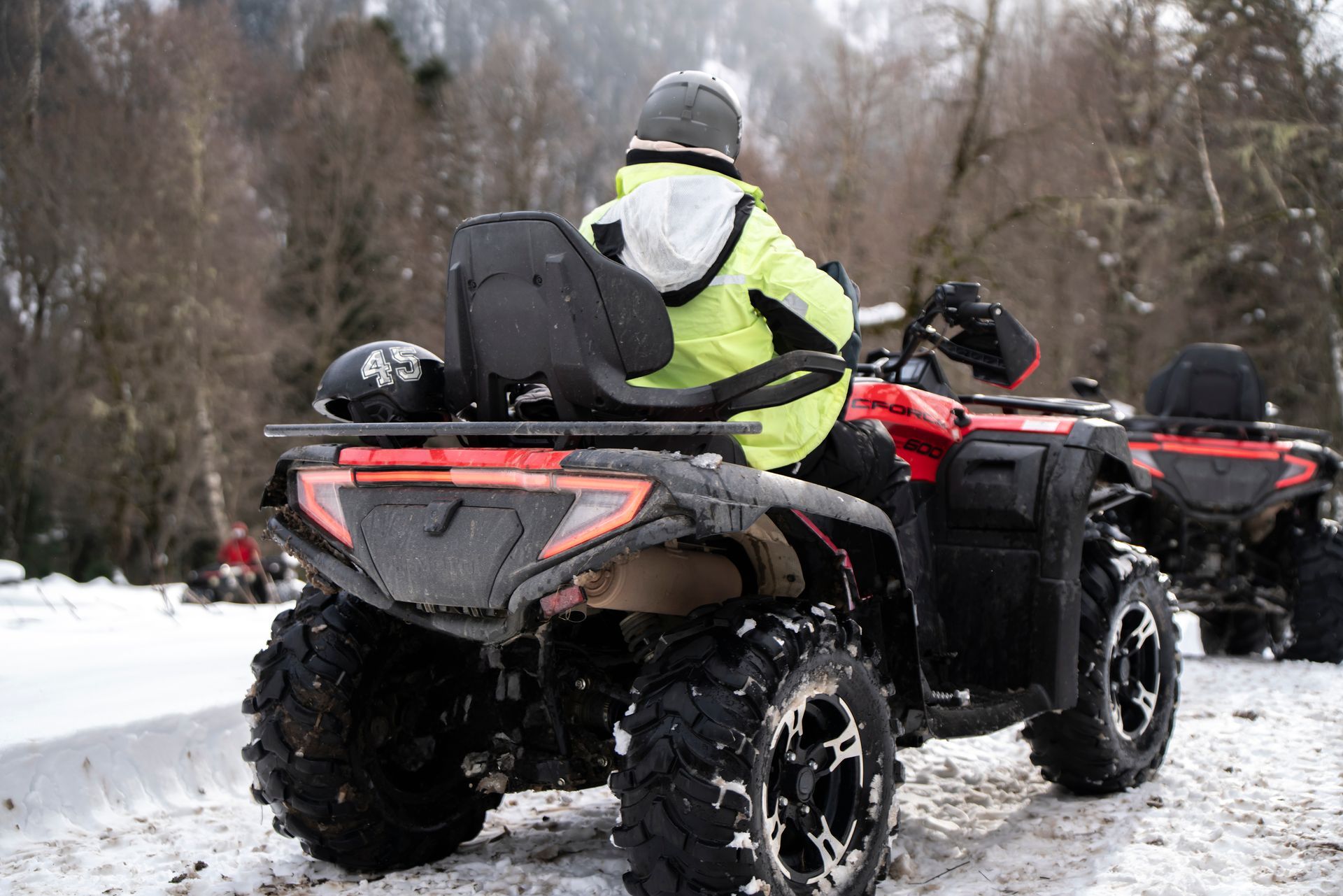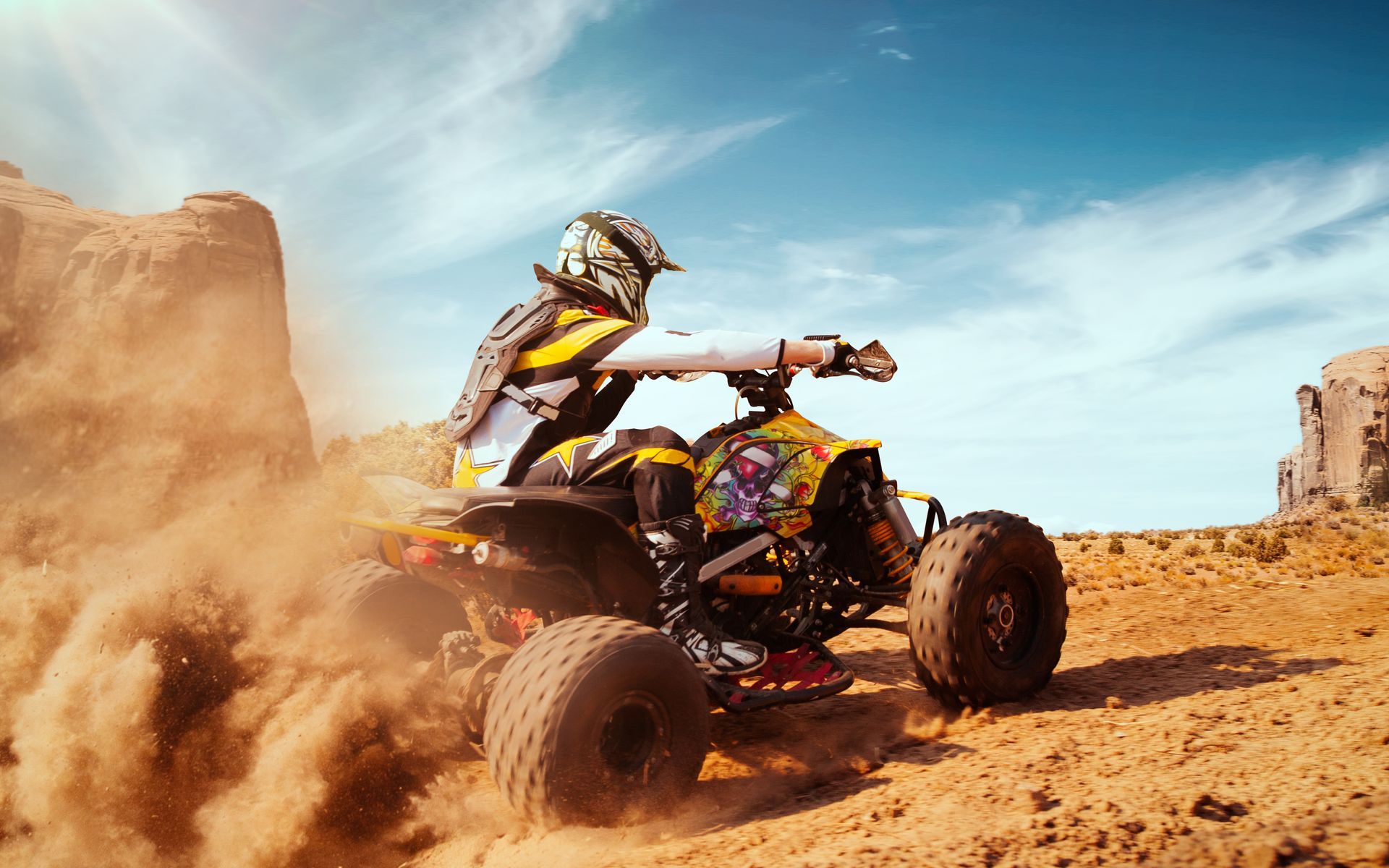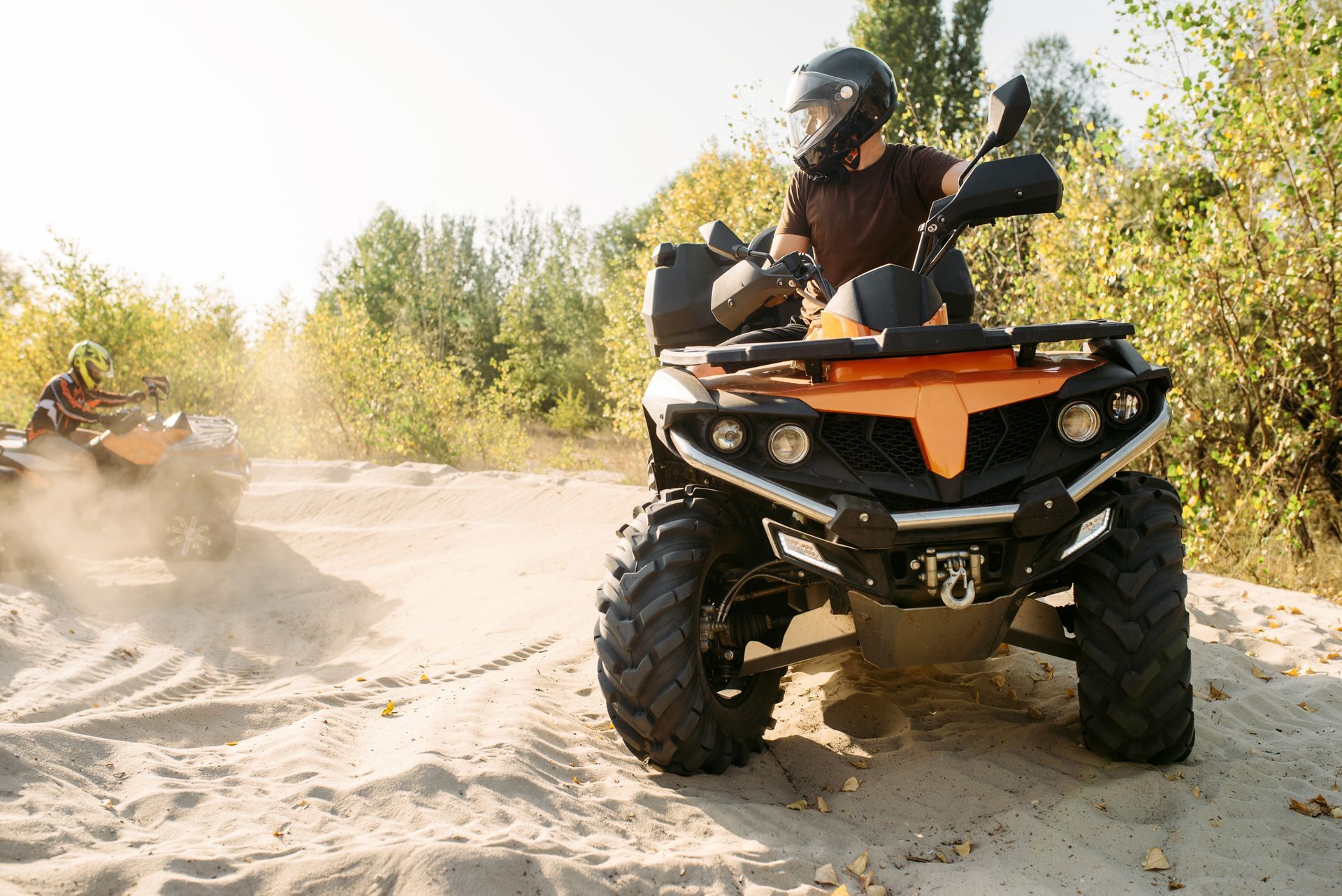What Safety Protocols Should Be Followed When Riding an ATV?
1. Wear Protective Gear
Helmet:
The most crucial piece of safety equipment when riding an ATV is a properly fitted helmet. Helmets can significantly reduce the risk of head injuries in the event of a crash or rollover. Look for helmets that meet the safety standards set by the Department of Transportation (DOT) or the Snell Memorial Foundation.
Eye Protection:
Dust, debris, and branches can quickly become hazards when riding an ATV. Wearing goggles or a face shield will protect your eyes and improve visibility while you ride. Make sure they’re comfortable and do not obstruct your view.
Gloves and Riding Boots:
Riding gloves provide better control of the handlebars and protect your hands from abrasions in case of a fall. Sturdy boots will help prevent foot and ankle injuries and provide additional support when riding over rough terrain.
Proper Clothing:
Wear long pants, a long-sleeved shirt, and sturdy clothing made of durable materials like leather or thick textiles. These will help prevent scrapes and cuts in case of a fall and protect your skin from the elements.
2. Know the ATV’s Limitations and Your Own
3. Check the ATV Before Every Ride
4. Follow the Rules and Ride Responsibly
5. Avoid Alcohol and Drugs
6. Control Your Speed and Avoid Reckless Riding
7. Stay Aware of the Environment
8. Take a Safety Course
Riding an ATV can be an exciting and enjoyable activity, but safety should always be a top priority. By wearing the right gear, maintaining your ATV, following local laws, and riding responsibly, you can reduce the risk of accidents and enjoy a safe off-road experience. Stay informed and practice these essential safety protocols to protect yourself, your passengers, and the environment.
If you’ve been involved in an ATV accident or have any safety concerns, contact us today.
We’re here to help with advice, resources, or legal guidance on ATV-related accidents.








